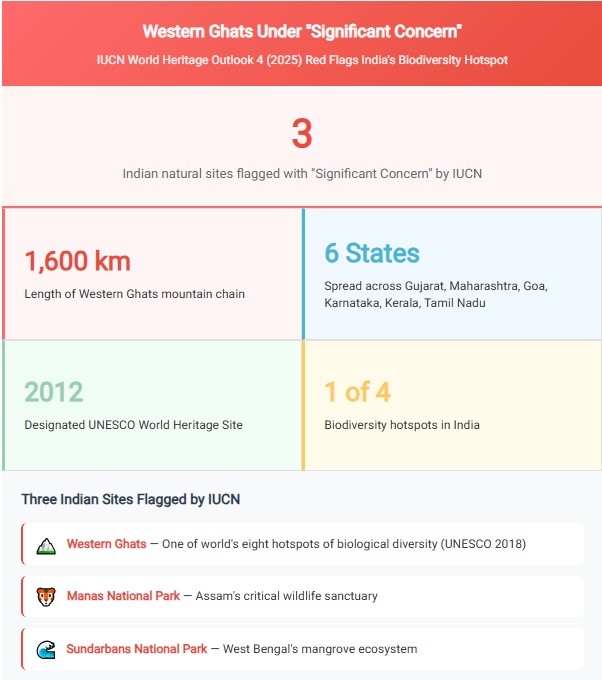7667766266
enquiry@shankarias.in
Mains: GS III – Environment and biodiversity
Recently, serious concerns were raised over India’s ecologically vital landscapes, including the Western Ghats, in the World Heritage Outlook 4 (2025) report released by (IUCN).
What are world heritage sites?
Western Ghats are among the four of the world’s 36 biodiversity hotspots located in India.
The other three biodiversity hotspots are the Himalayas, the Indo-Burma region, and the Sundaland.

What are the major threats highlighted in the report?

What are the efforts by the Indian government to protect the Western Ghats?
The Indian Express| Western Ghats